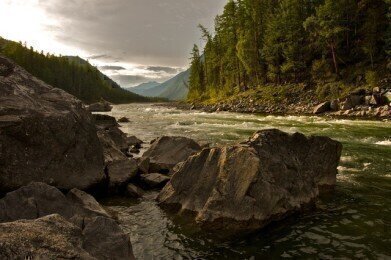Fuel for Thought
Fracking in North Dakota Caused Widespread Contamination, Study Finds
May 25 2016
The United States is currently indulging growing appetite for fracking, and North Dakota is the latest state to land itself in the spotlight. According to a new study from Duke University, hydraulic fracking wastewater spills are wreaking havoc on the environment, with widespread water and soil contamination identified across the state.
Is ND fracking out of control?
An innovative yet controversial process, hydraulic fracking sees subsurface rocks injected with highly pressurized fluids. This forces a system of fissures which allows hydrocarbons to escape. While economically effective, it’s associated with a host of environmental concerns, including the fact that the process is difficult to control and monitor. Duke researchers have now confirmed suspicions that fracking is compromising environmental stability, with high traces of ammonium, selenium, lead and other toxic contaminants found in and around the region.
“Until now, research in many regions of the nation has shown that contamination from fracking has been fairly sporadic and inconsistent,” comments Avner Vengosh. As professor of geochemistry and water quality at Duke’s Nicholas School of the Environment, Vengosh is an active member of the research team. “In North Dakota, however, we find it is widespread and persistent, with clear evidence of direct water contamination from fracking.”
Unambiguous link between fracking and pollution
As one of the USA’s biggest fracking hotspots, North Dakota is definitively on the radar of environmentalists. Over the past decade alone, over 9,700 wells have been drilled, and operations are still running strong. The latest Duke University findings confirm that high levels of fracking activity do have a negative environmental impact, with water and soil pollution identified as major knock on effects.
“The magnitude of oil drilling in North Dakota is overwhelming,” Vengosh warns.
ND on-track for a long term environmental fallout
As part of the study the team examined 3,900 spill sites, and explored the relationship between pollution and the intensity of oil drilling activity. The diagnosis was alarming, with the team warning of long-term contamination that can’t be reversed.
“Unlike spilled oil, which starts to break down in soil, these spilled brines consist of inorganic chemicals, metals and salts that are resistant to biodegradation,” explains Nancy Lauer, one of Vengosh’s Ph.D. students. “They don’t go away; they stay. This has created a legacy of radioactivity at spill sites.”
Fracking is fraught with its fair share of controversy, and pollution is always a paramount concern. For more insight into the environmental side of oil and gas, ‘Modern Hexane-Extractable (Oil & Grease) Analysis of Wastewater Samples’ introduces readers to n-Hexane-extractable material (HEM), and its role in assessing water pollution caused by a variety of hydrocarbons.
Digital Edition
PIN 25.1 Feb/March
March 2024
In This Edition Safety - The technology behind the ION Science Tiger XT - Safety with ammonia and LOHCs as hydrogen carriers Analytical Instrumentation - Discussion on new tribology te...
View all digital editions
Events
Apr 28 2024 Montreal, Quebec, Canada
Apr 30 2024 Birmingham, UK
May 03 2024 Seoul, South Korea
May 05 2024 Seville, Spain
May 06 2024 Riyadh, Saudi Arabia


















